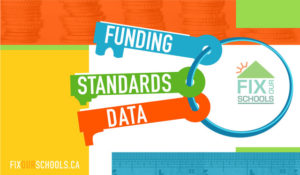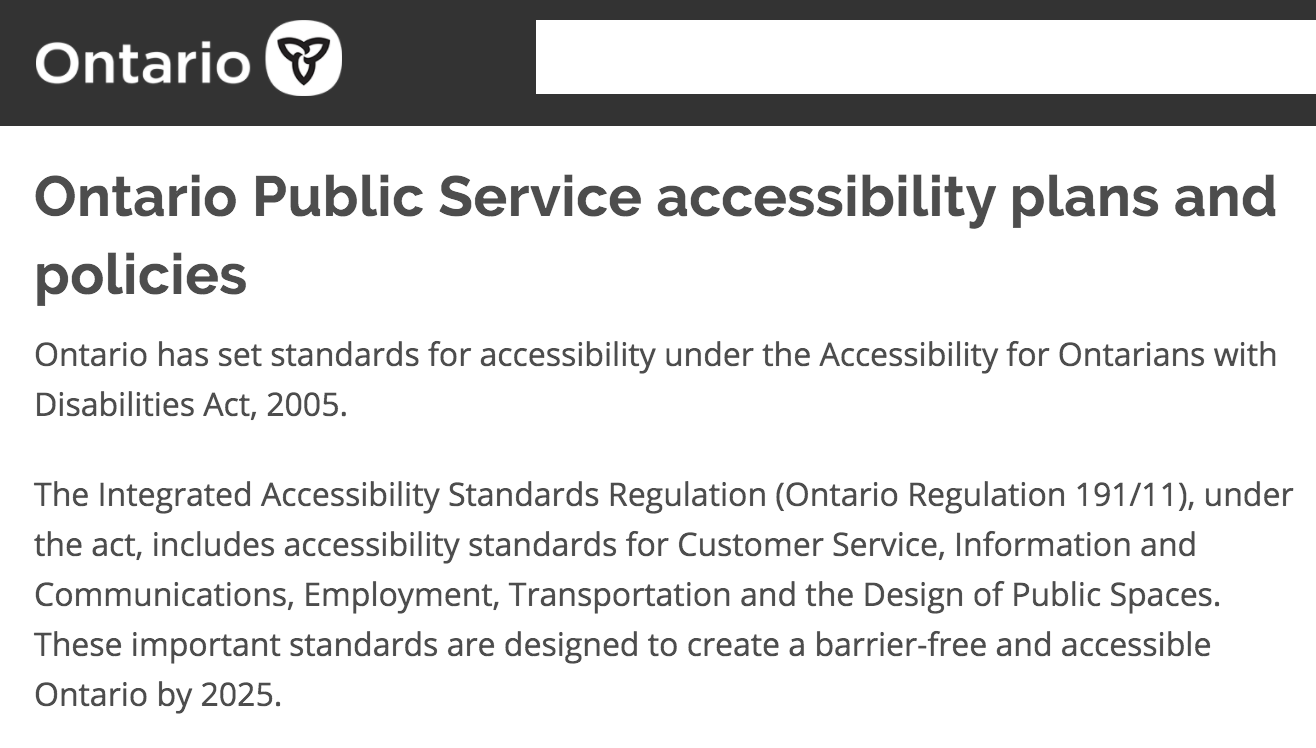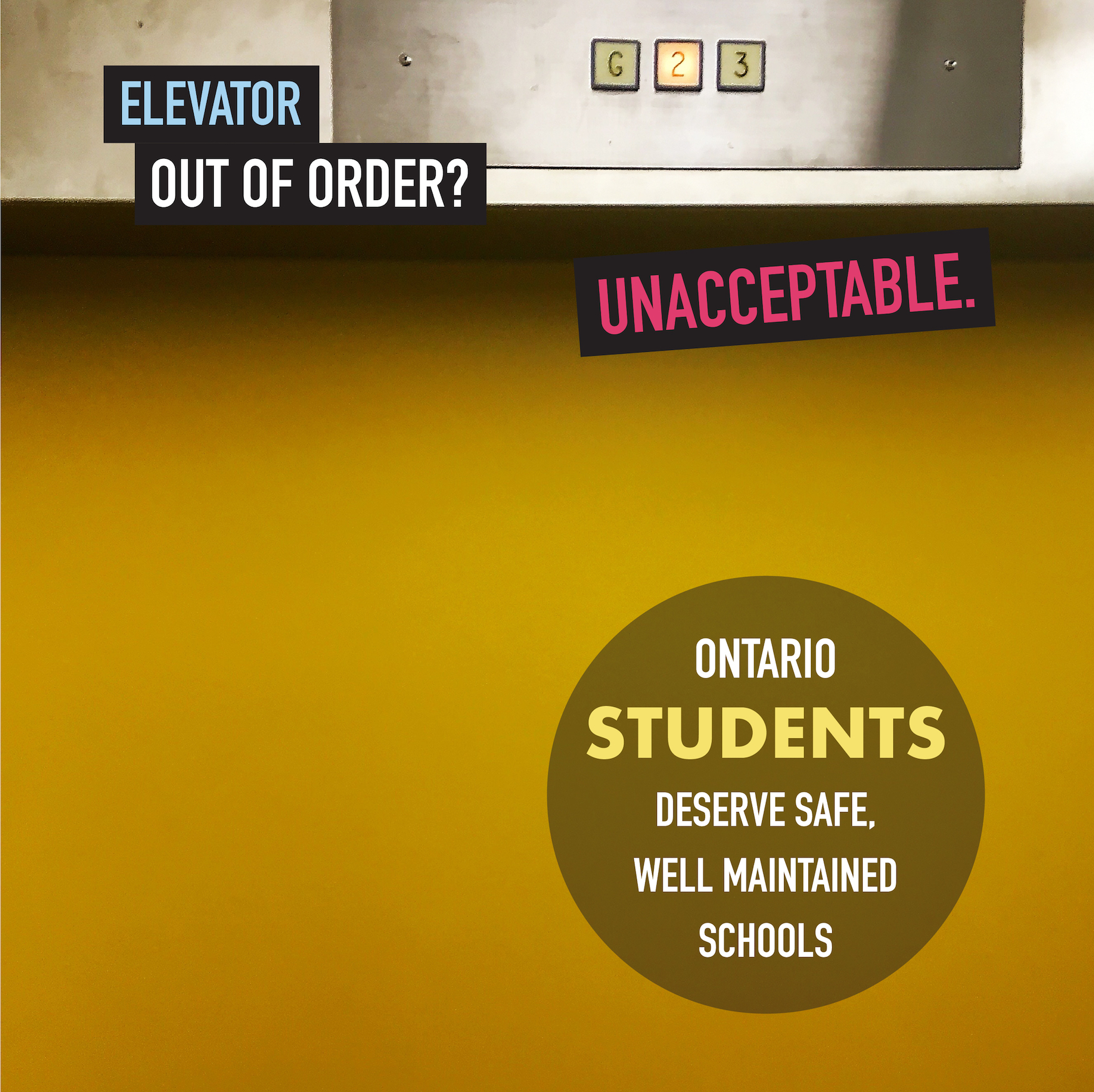If we prioritized children in Ontario, we would have standards in place for the spaces where they spend their days – school buildings, portables and schoolyards that would include and address:
- The $16.8-billion of disrepair in school buildings
- A program to assess current repair backlogs in portables and schoolyards
- Air quality and ventilation
- Classroom temperatures
- Accessibility
- Environmental efficiency & durability
- Job site safety for school construction projects and maintenance work
- Drinking water
- Asbestos
- Cleanliness – did we have new wording for this?? Check notes at home
- Classroom space
- Vermin, mold
- Fire and electrical code
If we prioritized children in Ontario, we would collect data regularly to ensure that these standards were being met; and we would insist upon transparent release of this data to ensure accountability. Our provincial government must be held accountable for implementing these standards for school buildings, portables and schoolyards; and our provincial government must also be held accountable for providing sufficient funding to achieve these standards and to be able to collect the data that demonstrates these standards are being met. Ontario’s school boards, were they provided adequate, stable levels of funding, must be held accountable for actually doing the work to meet these standards, and for collecting the data that proves the standards are, indeed, being met.
If we prioritized children in Ontario, we would acknowledge that school buildings, portables and schoolyards have been chronically and grossly underfunded by successive provincial governments for decades; and that a complete rethink of provincial funding for schools and education is desperately needed. Adequate, stable funding is urgently needed to achieve the safe, healthy, well-maintained learning environments that Ontario’s children deserve in their public schools.
In this blog, we will focus on the need for accessibility of the built form of school buildings, portables and schoolyards. We are defining full accessibility as school buildings, portables, and schoolyards that allow independent access into and throughout; and that provide a barrier-free washroom.
Inaccessible schools impact students, teachers, and the community
In a CBC news story published on August 21, 2021 entitled, “Toronto teacher who now uses wheelchair prompts TDSB to make school more accessible“, Talia Ricci reported that more than 50% of schools in the Toronto District School Board (TDSB), the largest school board in the country, have barriers to people with disabilities. Ricci highlights the story of Karyn Bugelli, a teacher and guidance counsellor at Malvern Collegiate Institute, who became paralyzed from the waist down after an operation to remove a cancerous tumour from her spine. Having been a member of the Malvern CI community for 15 years, she contacted her principal, Sandy Kaskens, to see how she could continue to do her job in a wheelchair. Kaskens’ first thought was, “Okay, what do I need to do to make sure she can return to Malvern.”‘
For Bugelli to get into her office, an exterior ramp and stair-lift would need to be installed, as well as an accessible washroom. While a process has begun to make these changes, both Bugelli and Kaskens realize that accessibility in Ontario’s schools is a massive project, and an issue that impacts countless students, teachers, and community members. They recollected one former Malvern student who was forced to transfer schools to one that was accessible after a spine issue meant he had to use a wheelchair. Bugelli remembers thinking, “What a terrible thing that a Grade 9 student would have to move away from his friends and move to a new school in this day and age.”
What a terrible thing, indeed. Under the Accessibility for Ontarians with Disabilities Act (AODA) the many barriers that impede Ontario students with disabilities between Kindergarten and Grade 12 (K-12) from fully participating in and fully benefiting from Ontario’s education system should be removed by 2025. A promised new law, to be called the “Education Accessibility Standard”, is meant to be enacted so that Ontario’s school system becomes barrier-free for students with disabilities by 2025.
What should be included in the Education Accessibility Standard law?
The provincial government appointed a committee comprised of members of the disability community and school system called the K-12 Education Standards Development Committee to make recommendations on what ought to be included in the “Education Accessibility Standard”. The non-partisan AODA Alliance prepared this summary of the latest recommendations from the K-12 Education Standards Committee. Fix Our Schools would like to highlight and wholeheartedly support the following portion of the summary that pertains to addressing physical and architectural barriers in schools:
“Too often, the built environment where K-12 education programming is offered, have physical barriers that can impede some students with disabilities from being able to enter or independently move around. These barriers also impede parents, teachers and other staff and volunteers with disabilities.
The Ontario Ministry of Education does not effectively survey all school buildings to ensure that they are accessible, or to catalogue needed accessibility improvements. Ministry of Education’s specifications for new school construction do not ensure that news schools are accessible.
The Standards Development Committee recommends that the Education Accessibility Standard should include specific requirements to be included in a new school, requirements to be included in a renovation of or an addition to an existing school, and retrofit requirements for an existing school not slated for a major renovation. Its detailed recommendations, beyond what the Ontario Building Code and existing AODA standards minimally require, are set out in full in the June 16, 2021 AODA Alliance Update. They do not only include the needs of people with mobility disabilities. They include people with other disabilities such as (but not limited to) people with vision and/or hearing loss, autism, intellectual or developmental disabilities, learning disabilities or mental health disorders.
Each school board should develop a plan to ensure that the built environment of its schools and other educational facilities becomes fully accessible to persons with disabilities as soon as reasonably possible, and in any event, no later than 2025. As a first step, each school board should develop a plan for making as many of its schools’ disability-accessible within its current financial context. They should identify which existing schools can be more easily made accessible. An interim plan should be developed to show what progress towards full physical accessibility can be made by first addressing schools that would require less money to be made physically more accessible.
When a school board seeks to hire design professionals, such as architects, interior designers or landscape architects, for a school project the school board should include in any Request for Proposal a mandatory requirement that the design professional must have sufficient demonstrated expertise in accessibility design. This includes accessibility needs of people with all kinds of disabilities, and not just those with mobility impairments. A properly qualified and experienced accessibility consultant should be retained by the school board (and not necessarily by a private architecture firm) to advise on the project from the outset, with their advice being transmitted directly to the school board.
Where possible, a school board should not renovate an existing school that lacks disability accessibility, unless the school board has a plan to make that school accessible. For example, a school board should not spend public money to renovate the second storey of a school which lacks accessibility to the second storey, if the school board does not have a plan to make that second storey disability accessible. Very pressing health and safety concerns should be the only reason for any exception to this.
When a school board decides which schools to close due to reduced enrolment, a priority should be placed on keeping open schools with more physical accessibility, while a priority should be given to closing schools that are the most lacking in accessibility, or for which retrofitting is the most costly.
Each school board should take an inventory of the accessibility of its existing indoor and outdoor play spaces and gym and playground equipment, and make this public. Each board should adopt a plan to remediate the accessibility of new gym or playground equipment.“
Provincial funding is needed to implement these recommendations and meet the 2025 deadline under AODA
The Ontario Public School Board Association (OPSBA) provided input to the K-12 Education Standards Development Committee’s development of proposed K-12 education standards. Fix Our Schools would like to highlight and wholeheartedly support the following portion of OPSBA’s recommendations, which pertains to addressing physical and architectural barriers in schools, and which candidly outlines the need for new, designated provincial funding in order to realize any of the proposed K-12 education standards:
“The intent/rationale of these recommendations is to ensure that as soon as possible, and no later than January 1, 2025, the built environment in the education system, such as schools themselves, their yards, playgrounds, etc., and the equipment on those premises (such as gym and playground equipment) would all be fully accessible to persons with disabilities and would be designed based on the principle of universal design. Where school programs or trips take place outside the school, these will be held at locations that are disability accessible. The intent/rationale is also to ensure that no public money is used to create new barriers or perpetuate existing barriers in the school system.
These recommendations are supported but school boards will need additional funding to meet all the requirements that are being recommended under this section, as well as a commitment from government to include accessibility requirements as part of the business cases when planning and designing new facilities. It was suggested that the Ministry of Education could hire accessibility consultants when reviewing business and infrastructure plans.
There are significant legislative and regulatory barriers that impact the Physical and Architectural Barrier recommendations. Specifically, the Building Code requirements are primarily designed for adults, which can create challenges for K-12 students or those with other needs that do not fit “normal” ergonomics. The Building Code also doesn’t take into consideration some specific requirements relating to school functions (i.e. lockdown requirements, etc.). A specific example is requiring electric strikes in fire separations to be Fail-Safe (remain unlocked during power interruptions), which creates issues and contradict school lockdown procedures. There are also significant financial challenges as accessibility alterations and upgrades to existing buildings are expensive and pose a significant strain on renewal budgets. There is (currently) no separate funding from the government allocated to address these needs. Also, current funding levels for new schools and facilities is not sufficient to incorporate all accessibility features and address all barriers.”
TDSB Chair, Alexander Brown echoed OPSBA when he wrote this letter to Education Minister Lecce on November 30, 2021 requesting additional and dedicated funding to support the accessibility of all existing schools. The TDSB estimates that to make all 570 of its schools fully accessible would cost approximately $1-billion, which would be in addition to the provincial funding required to address $3.7-B maintenance repair backlog currently faced by the TDSB.
Fix Our Schools has also included a call for additional funding specific to ensuring accessibility in public schools in each of its last three pre-budget submissions to the provincial government. In our most recent pre-budget submission, we stated, “clearly, when the current provincial levels of funding don’t even allow for school boards to proactively address disrepair in their school buildings, without specific funding for AODA repair and renewal items in schools, school boards cannot reasonably meet the 2025 deadline for full accessibility in schools”.
Let’s start truly prioritizing children in this province. We must implement standards for school buildings, portables and schoolyards; collect the data that demonstrates these standards are being met; publish this data at regular intervals to ensure accountability; and provide the funding that is actually needed to achieve these standards and level of transparency. We expect results Premier Ford and Minister Lecce – and to get those results, standards, data and funding are absolute precursors.



